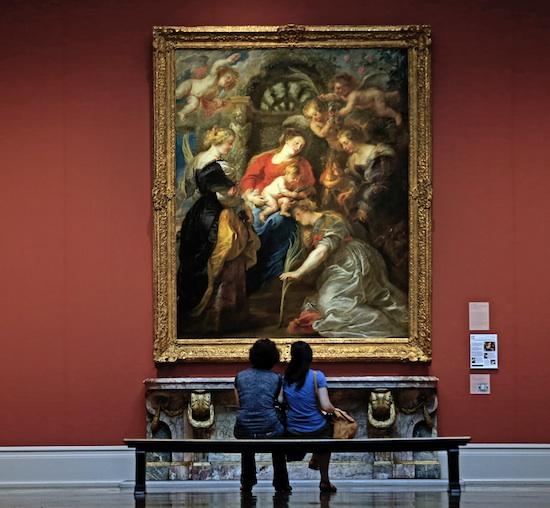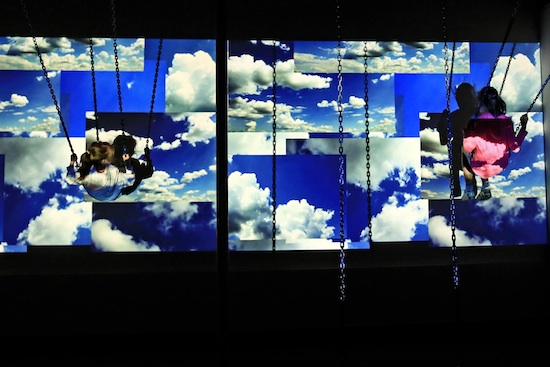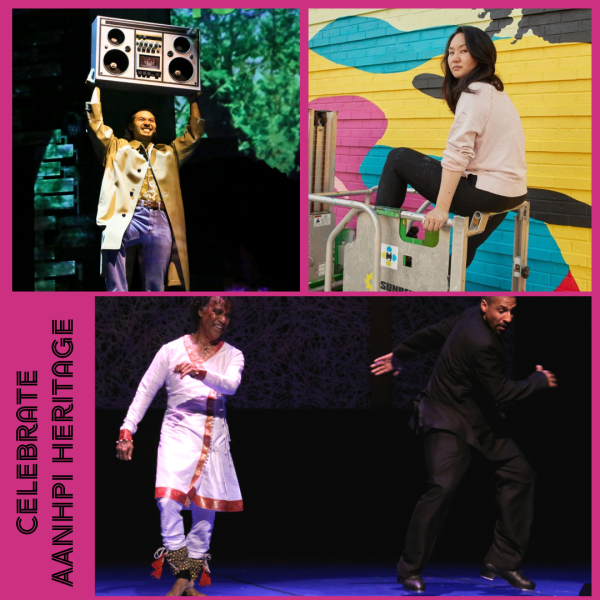Blue Star Museums Spotlight on the Toledo Museum of Art

In 1901, the Toledo Museum of Art consisted of two rooms, which it rented rather than owned. Flash forward a century or so and today, the museum's campus comprises 36 acres and six buildings, including a visual arts center, a theater, and an award-winning glass pavilion that functions as both gallery and studio space. Visitors to the museum's neo-classical main building are welcomed by Alexander Calder's Stegosaurus, a vibrant stabile of red-painted steel. The Calder is just one of the pieces in the museum's permanent collection of more than 30,000 world class works of painting, drawing, sculpture and other types of visual art.
This summer, the museum is hosting three diverse exhibits. On view through September 6, 2015, are Earthly Beauty--featuring 90 works from the permanent collection that offer "dreamy depictions of worldly beauty, both real and imagined," and PlayTime, a multi-site exhibit which seeks to "encourage people of all ages to relish the benefits of play." The museum has also drawn on its collection for another exhibition, 300 Years of French Landscape Painting, showing through October 11, 2015, and featuring landscapes by Paul-Auguste Renoir, Paul Cezanne, Claude Lorain, and many others.
We spoke via e-mail with Toledo Museum of Art Head of Membership and Visitor Services Melissa Cassidy who told us more about the museum's impressive collection, shared tips for making the most out of a visit to the museum, and explained why the museum proudly participates in Blue Star Museums.
NEA: Why is Blue Star Museums an important program for the Toledo Museum of Art?
MELISSA CASSIDY: It's a wonderful opportunity for us to show appreciation to people who have sacrificed so much for our country. Our museum and our collection are a celebration of freedom of expression, and our service members are an essential part of protecting that freedom. We’ve had 103 participants so far this year, and not only do we get to give them the perk of free parking, we get to acknowledge them and thank them.
NEA: What's unique about the Toledo Museum of Art?
CASSIDY: We’re special in that for a museum of our size and location, we have a world-class collection. We’re known as a “gem of the Midwest,” and the feedback from out-of-town visitors is often surprise at the caliber of the art, with works by all of the big, household names—Vincent van Gogh, Pablo Picasso, Claude Monet, Henri Matisse—as well as art by important but less well-known artists. The Museum is also unusual in that throughout its 114-year history, general admission has always been free.

NEA: What's your favorite piece in the permanent collection, and why?
CASSIDY: I love Woman With A Crow by Pablo Picasso. There’s something about this mysterious woman, as well as the color, that appeals to me.
NEA: What is a must-see when visiting the museum and/or what's one of the unsung treasures at the Toledo Museum?
CASSIDY: The Crowning of St. Catherine by Peter Paul Rubens is one of the jewels of our collection. Its scale is impressive, but also its history—at one point it was in Nazi hands and was “saved.” It was painted in 1633 and is considered one of the best examples of Rubens’ work in North America. It hangs in the Great Gallery, which is an absolutely fantastic, beautiful space.
I also think our Glass Pavilion is a must-see—the building opened in 2006 and houses our internationally known glass collection. In addition to the galleries, there are artist studios and a Hot Shop where free glassblowing demonstrations are given nearly every day the Museum is open. It has been covered in the travel sections of the Wall Street Journal, Travel + Leisure, and other publications.
NEA: How can families prepare to visit the museum? What are some tips for getting the most out of a visit to the Toledo Museum of Art?
CASSIDY: Make sure you budget enough time—you’ll need at least two hours to really experience the collection and our special exhibitions. Currently, Play Time—which features a crocheted, climbable installation called Harmonic Motion—has been extremely popular with families.
If you’re looking to beat the crowds, the best days to attend are Wednesdays anytime and Thursday evenings. We’re open until 9 p.m. on Thursdays and Fridays, when free concerts, lectures, and film screenings are scheduled.
And plan to eat lunch or dinner at the museum. Most people don’t know this, but we have a fantastic gourmet café, with a great kids’ menu. General admission to the Museum is always free, and parking is $5.00.
NEA: What's your favorite Blue Star Museum (next to your own museum, of course) and why?
CASSIDY: We have two great neighbors that offer different but equally great experiences. In Fremont, I’d recommend the Rutherford B. Hayes Presidential Center—walking through the former U.S. president’s home is a fantastic peek at history. Up north, the Detroit Institute of Arts, about an hour drive from us, has an incredible collection. They both confirm my pride in the Midwest’s art experiences!






